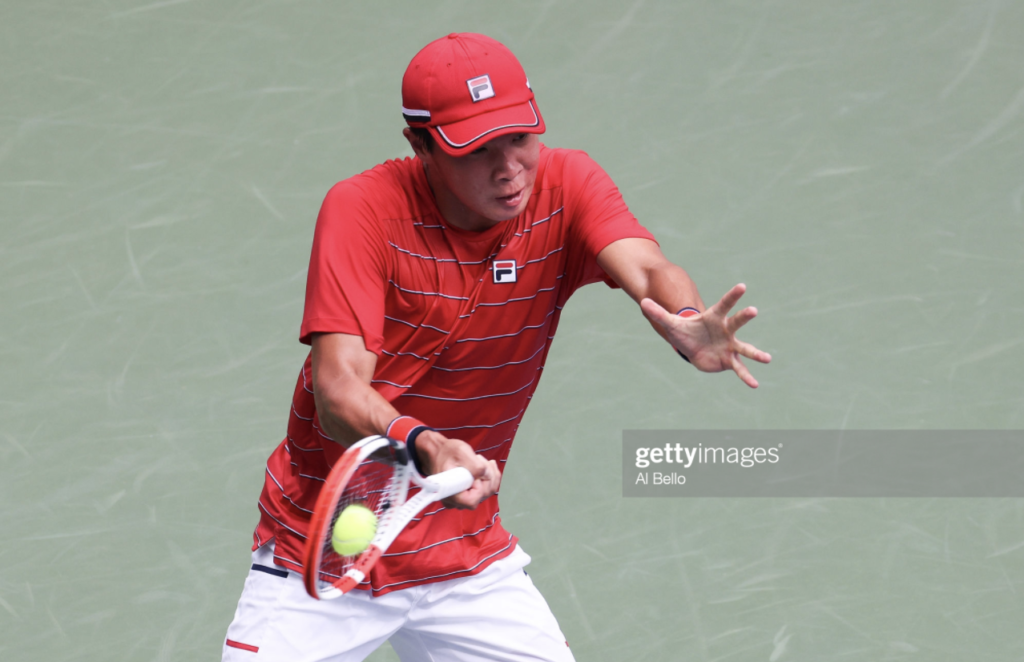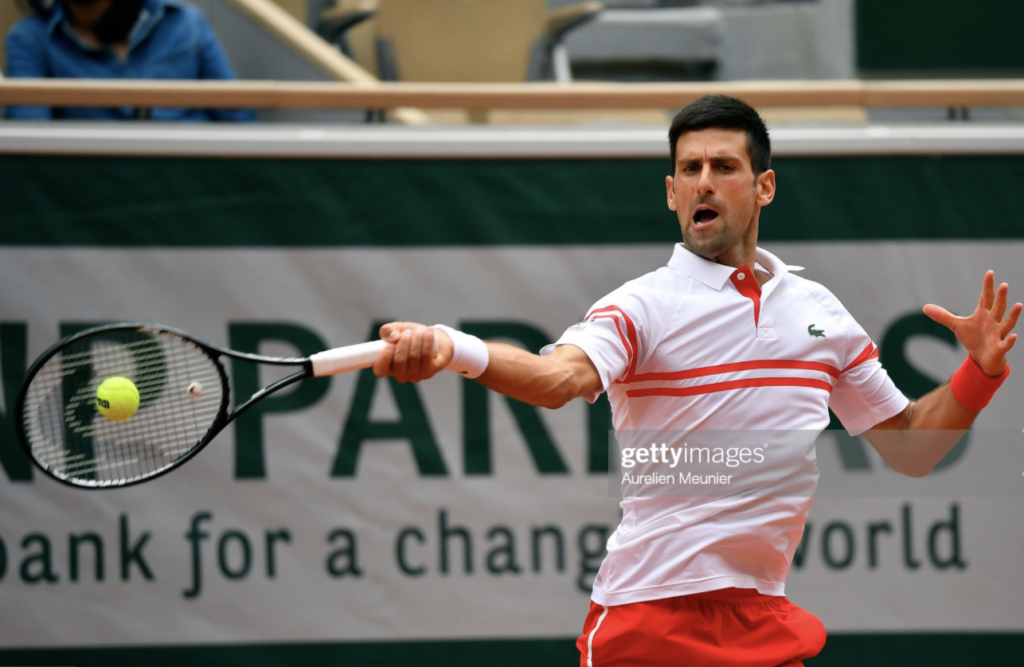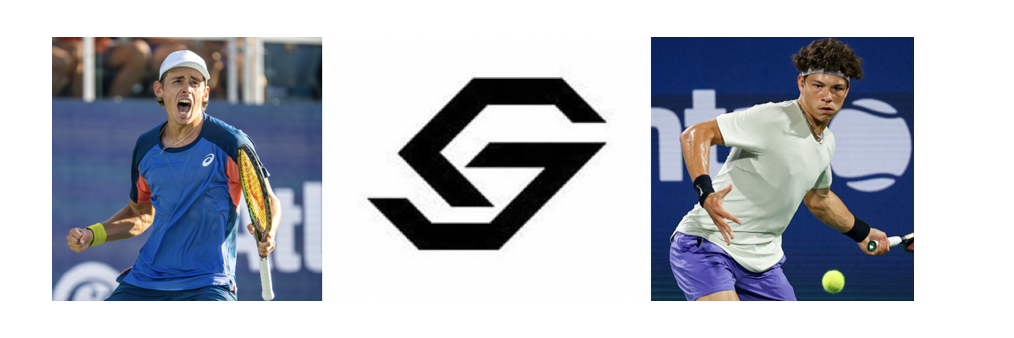
Novak Djokovic and Vasek Pospisil’s player’s association calls for more prize money for early round losses, but they may be focusing their attention in the wrong place.
Before I say any of this, I would like to go on record to state that Novak Djokovic has more money than he can spend in a lifetime, thus his dedication to this new player’s union is really quite noble. Tennis has a serious problem on its hands, and the ATP’s inadequate response to the fact that most of its players cannot earn a proper living while a few pocket millions every year quite literally invited the creation of the PTPA. Somebody had to act. I have full respect for Djokovic putting his might behind something that probably won’t affect him personally in the slightest.
The ATP isn’t particularly thrilled with the formation of Djokovic and Vasek Pospisil’s PTPA player’s association. Actually, that’s an understatement – they DESPISE it. They haven’t explicitly said so, but I get the distinct impression that they consider it nothing less than sedition. And according to Pospisil in an expletive-filled rant on court, ATP chairman Andrea Gaudenzi was so incensed, he screamed at Pospisil for “an hour and a half” during a player’s meeting at the Miami Open earlier this year.
Suffice it to say that this is a highly charged topic. Players have taken sides; Rafael Nadal and Roger Federer, who are back on the player’s council, petitioned their colleagues to give the ATP time to make changes rather than stage a mutiny. Dominic Thiem and Kevin Anderson are team ATP, while others like Sam Querrey and Diego Schwartzman have voiced support for the PTPA.
At the heart of the controversy is prize money, particularly for players ranked outside the top 100. The PTPA is petitioning for tournaments to share a larger portion of ticket sales with the players. And while that sounds great on paper, in practice it’s not only complicated, it also probably won’t come anywhere near solving the problem.
I’m in Atlanta this week. It’s an ATP 250 event and part of the US Open Series. The prize money for the winner is around $55,000. (Note – this year’s purse is 20% lower due to the COVID pandemic). To put that into perspective, players who earn a spot in the first round of the U.S. Open get $61,000. Athletes don’t come to 250 events for the purse, they come for the ranking points. Because when you get enough rankings points, you get direct entry into events like the U.S. Open (or try to get seeded) where you can make $60,000 without having won a single match. That’s the way men’s tennis works.
To prove my point, as of the time of this publication, world No. 115 Brandon Nakashima has made his way to his second final in as many weeks at the Atlanta Open. The American teenager is clearly on his way up and his efforts in Atlanta will most likely secure him a direct entry spot in the U.S. Open draw.

With that said, I’m sure you’re starting to see the flaw in Djokovic’s big plan to “make tournaments share more of the ticket sales” already, right? The events that players outside the top 100 play (250 events, Challengers and Futures) simply don’t have enough in ticket sales to do much more than break even after shelling out prize money and appearance fees. There IS no more money to share. There just isn’t.
And by the time you get to events that DO have money to share (Masters events*) the draw is such that those tournaments are only generally available to players inside the top 50 or 60**. Put succinctly, a more generous disbursal of ticket sales revenue would put more money in the pockets of the top 50, it might benefit a few players ranked between 50-100, but it’s completely useless for anyone ranked below that. And given that the PTPA claims to represent the interests of singles players in the top 500, it’s a spectacularly inadequate solution.
Side note – it doesn’t escape my notice that Djokovic’s plan includes no hint that a possible solution would be for the prize money to be redistributed so that the winner receives a bit less and the early round exiters receive more. Now, don’t get me wrong, I’m not saying it should, since it would still only benefit players who are ranked high enough to get into a Masters event. I’m just saying it amuses me that it wasn’t on the table.

The complicated but only viable answer, of course, is that the entire system needs to be restructured. It just won’t work any other way. The tournaments that interact with players at Challenger events when they’re building ranking points need to be able to award more prize money…and they simply cannot depend on ticket sales to generate the capital. It will have to come from a pool of money managed by a single governing body and disbursed the way tax money is collected and then redistributed.
And while we are talking about a “single governing body”, yet another issue that needs to be resolved is the fractured organization model. The ITF runs Futures events and Slams, and the ATP runs Challengers, 250s, 500s, and Masters 1000 events. How can the ATP cast vision that the Slams and Masters events need to financially support the “lesser events” for the greater good when they don’t have jurisdiction in the 4 biggest tournaments of the year? They can’t.
I’m glad Djokovic and Pospisil have started the conversation. Tennis has already backed itself into a corner and functions largely as a niche sport. We cannot continue to present an image to elite young athletes that only 40 men in the ENTIRE WORLD can earn a decent living off tennis at one time. Because they’ll pick basketball or football instead, and who could blame them?
If we continue the way we’re headed, tennis will devolve into a sport that only independently wealthy players can succeed at…and I’m pretty sure nobody wants to see that.So, yes. Djokovic and Pospisil are (correctly) waving their hands in alarm, but they’re bringing a fire extinguisher when the whole house is ablaze. Time to break out the tankers and hoses.
* Slams also have plenty of cash, but they aren’t under the ATP’s purview, so they aren’t germane to discussion.
** Most Masters events have 64 player draws. Indian Wells and Miami draws are 96 players.


I’m not at all sure that there’s some kind of right to earn a living by doing something that produces nothing and no one will pay to see. And yes, the ATP is a peculiar place to start. The big bucks come from the slams and they’re controlled by the four countries that have the ownership. They’re historic, they’re very profitable and they’re somewhat under the jurisdiction of the ITF. Many of the Masters events are owned by a country’s national tennis federation and the profits go to them, as in Rogers Cup is aka the Canadian Open, Rome is aka the Italian Open. I don’t know how Monte Carlo, for instance, is structured but it’s older that the ATP. The ATP sanctions these events. I have no idea what kind of control it has over the distribution of prize money. The one event that is owned by the ATP is the finals and that one is limited to the top 8 players. You can’t get blood from a stone so all the PTPA has managed to do is about as effective as your dog barking at a car driving down the street. Lots of noise, no notice taken.
Frankly I don’t think Djokovic had any interest in trying to get Rafa and Roger on board. Before the PTPA was dreamed up, the players’ council organized a sort of coup and ousted the current ATP president. Djokovic wouldn’t even talk to either Roger or Rafa, he was “too busy”. I don’t know much about the workings of the player council but one of its jobs is to KEEP THE PLAYERS informed. It is a time consuming job, that’s one of the reasons Rafa retired from it. Djokovic ended up in splitting the council with several members retiring from it. Roger and Rafa didn’t like what was going on so they ran for membership in the next election. During this period Djokovic was meeting with and working with Justin Gimelstob, who was then under indictment for assault and battery. (He plea dealt the felony charge down to a misdemeanor by agreeing to plead no contest) Gimelstob badly wanted the Chairmanship of the ATP and that was the original plan. Present chair out, Gimmeeslob in. I am convinced that all this is still some kind of power grab by Djokovic, or maybe just the “legacy” he wants to leave: bread and circuses is always a good sell to hungry masses. Posposil of course does have skin in the game. The middle of a pandemic was a truly odd time to try to organize a rebellion but a slam is when you have most of the upper echelons present. And Rafa and Roger being absent may have been an added incentive.
Tennis is in the entertainment business. The stars get the big bux. The extras get peanuts. That’s just the way it works. The extras are willing to work for peanuts because they dream of becoming stars. And frankly the stars are worth it. The Citi Open is sold out with a waiting list of 15,000 because Rafa is playing there this year. He’s worth whatever incentive money he’s getting from them.
Take away the pricemoney for LOSING in the first round. There are a bunch of high ranked players that enter a 250 tournament and lose in the first round without really trying. They probably also receive money just to sign the papers to play these smaller tournaments. Take this money and put it distribute it as price money for WINNING matches. I would rather see two top 50-60 players fight their butts off, playing good tennis than to see Fognini losing 6-1 6-1 in the first round while being totally uninterested.
This is the most lucid description of what the PTPA actually wants I have yet seen, which already tells you that they have a major messaging problem. But yes, “more money from ticket sales” is not going to get very far especially as ticket sales themselves are slumping even more than they were as the pandemic continues. All that does is put more tournaments out of business. Agree that there need to be more creative solutions (and if you really want equity it is going to have to come partly from the top players, so a divided front is probably not going to get much done.)
Yep. It took a lot of digging to figure out what their platform is. They just…didn’t think through it. Worse, the players themselves don’t seem to know for certain what the PTPA is trying to accomplish. They need a few professionals to come in and get the business in order.
After reading this I realised I don’t even know who makes up the ATP governing body and how they got into positions of power. I think slams are where the money is, in terms of revenue, and it’s separate from this discussion, crazy!
Nothings going to change any time soon. Tennis is like a dinosaur, it moves very slowly and may well become extinct quite soon.
Margot, this page accurately describes the structure, but don’t pay attention to the player’s council. A bunch of players resigned after the PTPA was formed.
https://www.tennismajors.com/atp/atp-role-chairman-structure-all-you-need-know-81433.html
Essentially, the chairman (Gaudenzi right now) is appointed by the board, and the player representatives on the board are appointed by the players council. Presumably the Tournament representatives on the board are similarly appointed by the members of the tournament council (though that website doesn’t seem to say so)
Cheers, will check it out.
Cheryl: I’ve read it twice now and it’s still as clear as mud.
How is this board of directors chosen, secret ballot, unchallenged nomination, what? Who decided the current representation? How do they decide policy?
Obviously Fed has considerable clout but he seems quite a conservative dude, politically.
Who on earth is Gaudenzi? How is he qualified? At least I’d heard of Kermode.
I’ve loved tennis all my life but boy oh boy it seems screamingly old-fashioned and now increasingly, as you imply, following the money.
Quite a Western bias, isn’t it? I guess that’s where the bucks are.